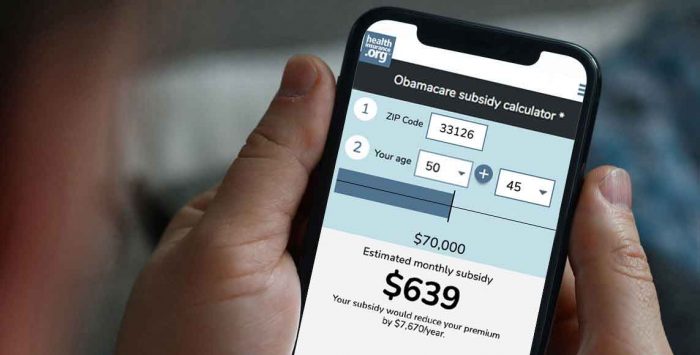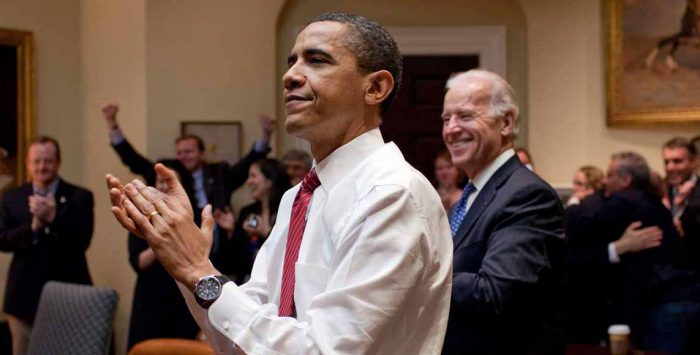Please provide your zip code to see plans in your area.
Featured

Featured

easy enrollment program
What is an easy enrollment program?
What is an easy enrollment program?
An easy enrollment program is a system that allows people without health insurance to check a box on their state tax return, giving the state department of revenue permission to share pertinent details with the state Medicaid office and health insurance exchange/marketplace. That information is then used to make a preliminary determination about whether the tax filer and their family members might be eligible for financial assistance with their health coverage – either Medicaid/CHIP or a premium tax credit (subsidy) in the exchange.
The state Medicaid office or health insurance exchange will then reach out to the tax filer, notify them of the coverage and financial assistance for which they may qualify, and provide enrollment assistance.
Medicaid/CHIP enrollment is available year-round, but enrollment in a private plan through the health insurance exchange is only available during open enrollment or during a special enrollment period. Open enrollment in most states ends well before the tax filing season gets underway. So states that have established easy enrollment programs — and that also run their own health insurance exchanges — provide special enrollment periods to residents who use the program and aren’t eligible for Medicaid or CHIP (without this special enrollment opportunity, the person would have to wait until the next annual open enrollment period to sign up for coverage).
Which states have established easy enrollment programs?
The following states have enacted legislation to create easy enrollment programs (some are already up and running as of 2022, and others will take effect in future years):
- Maryland
- Colorado
- Massachusetts
- Pennsylvania
- Virginia (initially just for Medicaid/CHIP eligibility. Once Virginia has a fully state-run exchange, they can also offer a special enrollment period for private health plans)
- New Mexico (available as of early 2023, for the 2022 tax year)
- New Jersey (available as of early 2024, for the 2023 tax year)
- Maine (available as of early 2024, for the 2023 tax year)
- California (available as of early 2024, for the 2023 tax year)
- Illinois (available as of early 2023, for the 2022 tax year. But Illinois still uses HealthCare.gov for now, which means they can’t offer a special enrollment period for private health plans. The legislation notes that the not-yet-created state-run exchange would also be responsible for enrolling people in Medicaid under the easy-enrollment program, but that prior to the establishment of the state-run exchange, the state would be able to use the information provided in tax returns to do a preliminary financial eligibility assessment and inform the tax filer of the results.)
A state can only offer a special enrollment period for marketplace coverage if it runs its own health insurance exchange (in states that use HealthCare.gov, the federal government establishes parameters for special enrollment periods). Maryland, Colorado, Massachusetts, Pennsylvania, New Mexico, California, and New Jersey all have state-run marketplaces, so their easy enrollment programs can check for eligibility for Medicaid/CHIP as well as premium subsidies, and can offer a special enrollment period in the marketplace if the person is not eligible for Medicaid/CHIP.
Virginia will have a state-run marketplace as of the 2024 plan year, but currently uses HealthCare.gov. So the 2021 Virginia tax return included a box that tax filers could check if they wanted their information to be shared with the Virginia Department of Medical Assistance Services to determine eligibility for medical assistance (Medicaid or CHIP/FAMIS). But Virginia cannot yet offer a special enrollment period for marketplace coverage in conjunction with the state tax return; that will come later, once the state-run marketplace is in use.
Illinois has a partnership exchange as of 2022. The state runs Get Covered Illinois, but enrollments are conducted through HealthCare.gov. The Illinois legislation, which was enacted in May 2022, notes that the program will be effective as of 2023 (for the 2022 tax year), but clarifies that the legislation “authorizes the Department to share the taxpayer’s income information with the State health benefits exchange for that purpose if a State health benefits exchange is operational.” (emphasis added)
Will more states create easy enrollment programs?
It’s likely that some additional states that run their own exchanges will consider establishing easy enrollment programs. There are several other state-run exchanges that could establish easy enrollment programs if state lawmakers support the idea.
The fiscal note for Maine’s easy enrollment legislation notes that the state will incur a one-time $55,000 cost to reprogram state tax returns, and then a $4,000 ongoing annual cost for administration — so easy enrollment programs are inexpensive to establish.
The bulk of the cost would likely be additional Medicaid/CHIP enrollments that stem from the program, which is something that state lawmakers likely have in mind when considering these programs (premium subsidies in the marketplace are funded by the federal government, but Medicaid is jointly funded by the state and federal governments).
Can a state that uses HealthCare.gov create an easy enrollment program?
Yes, but with some limitations. A state can only create a special enrollment period for marketplace coverage if it runs its own marketplace. As of the 2023 plan year, there are 33 states that rely on the federally-run exchange (HealthCare.gov) and thus cannot create their own special enrollment periods. DC and the other 17 states have the flexibility to implement their own special enrollment periods.
Almost all of the states that have thus far created easy enrollment programs either already run their own exchanges or plan to do so in the future (see above for details about Virginia).
But Illinois — which enacted legislation in 2022 to create an easy enrollment program — has a partnership exchange that relies on HealthCare.gov for enrollment, and has not yet charted a path toward running its own exchange (although the bill language indicates that a fully state-run exchange is something the state is considering). So Illinois does not yet have the ability to create its own special enrollment period for marketplace coverage.
Instead, Illinois will (at least initially) use the easy enrollment program to help eligible residents enroll in Medicaid or CHIP. If the tax return indicates that the person is eligible for a premium tax credit in the marketplace, the state will inform them of that and would provide information about the next open enrollment period (November 1 to January 15) and general special enrollment periods. (The bill notes that if Illinois were to create its own state-run exchange, a special enrollment period could be offered in conjunction with the easy enrollment program.)
How does an easy enrollment program benefit consumers?
Easy enrollment programs can reach consumers who might be unaware of the fact that they or a family member might be eligible for Medicaid, CHIP, or marketplace premium subsidies. Anyone who files a state tax return can use an easy enrollment program, and the state then does the work of making a preliminary determination of the person’s eligibility for financial assistance with health coverage.
Since Medicaid/CHIP enrollment is available year-round, and since state-run exchanges have the flexibility to offer special enrollment periods to people who use the easy enrollment program, uninsured residents may find that they’re able to obtain low-cost or free health coverage soon after filing their tax returns.
Is easy enrollment the same as automatic enrollment?
Depending on how a state creates its easy enrollment program, it can also be a form of opt-in automatic enrollment. Public health experts generally support the idea of automatically enrolling uninsured people in health benefit programs if they’re eligible for zero-cost coverage. And a tax return is a good way of obtaining some of the information necessary to do that.
If a state simply utilizes a check box on the state tax return, some additional information will generally be necessary in order to complete an enrollment in health coverage, including immigration status and details about access to employer-sponsored health coverage. But a state could give tax filers the ability to provide this information along with their tax return, or to opt into a system that automatically enrolls the person if the necessary information is subsequently provided.
For tax filers who qualify for marketplace coverage, a state can use information from its easy enrollment program to create a marketplace account for the tax filer. The marketplace can then reach out to the person and provide assistance with the completion of the application and plan selection.
People who are eligible for subsidized – but not free – health coverage in the marketplace cannot be auto-enrolled, as they will need to pay a premium in order to activate their coverage.
Could the federal government create an easy enrollment program?
Yes, the federal government could create an easy enrollment program. In the fall of 2021, Senator Chris Van Hollen (D, Maryland) and Representative Ami Bera (D, California) introduced legislation (S.3001 and H.R.5610) to create a federal easy enrollment program.
Under the legislation introduced by Van Hollen and Bera, the federal easy enrollment program would be similar to the existing state-run programs. But it would use the federal tax return, and would allow for a special enrollment period in any state, including those that use the federally-run marketplace. For uninsured residents who are eligible for zero-premium plans in the marketplace (after subsidies are applied), the federal legislation also calls for the creation of a program that could automatically enroll them unless they opt-out or pick a different plan.
Related articles
How the Affordable Care Act's subsidies are calculated, and who is eligible to receive them under the American Rescue Plan.
Open enrollment for 2022 ACA health coverage started nationwide on November 1. In most states, it will end on January 15, 2022.
Sweeping health reform legislation delivered a long list of provisions focused on health insurance affordability, consumer protections.










